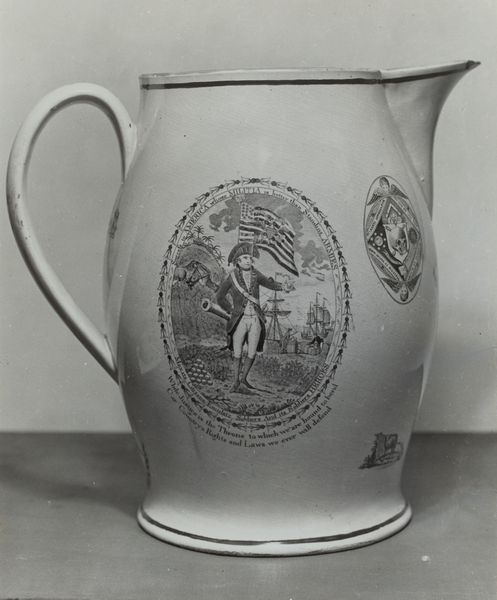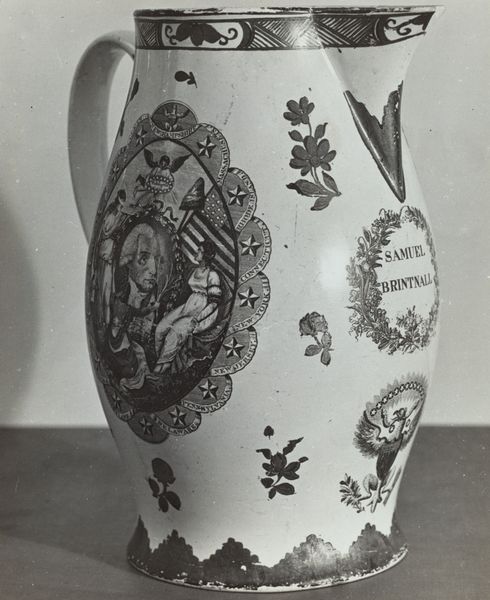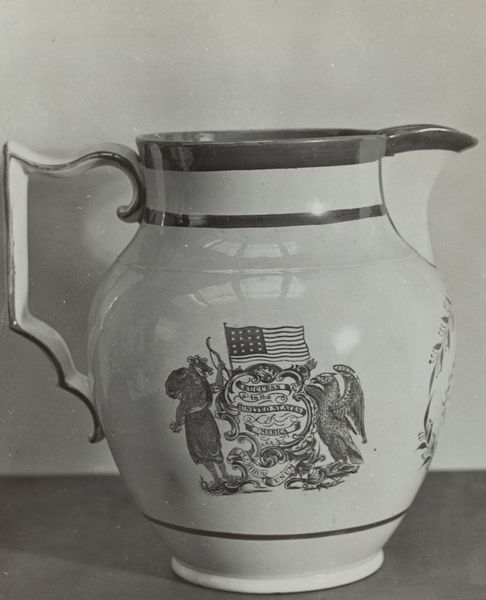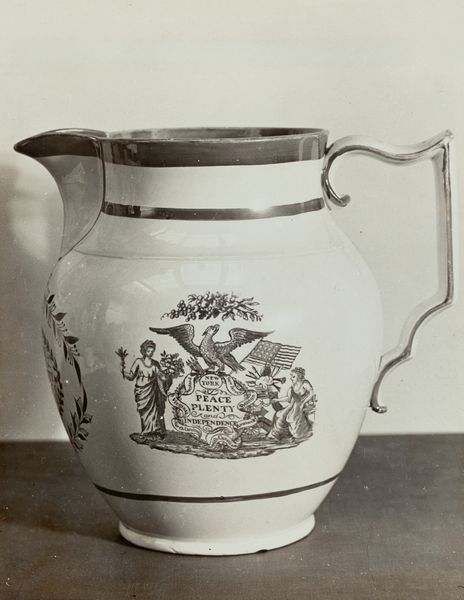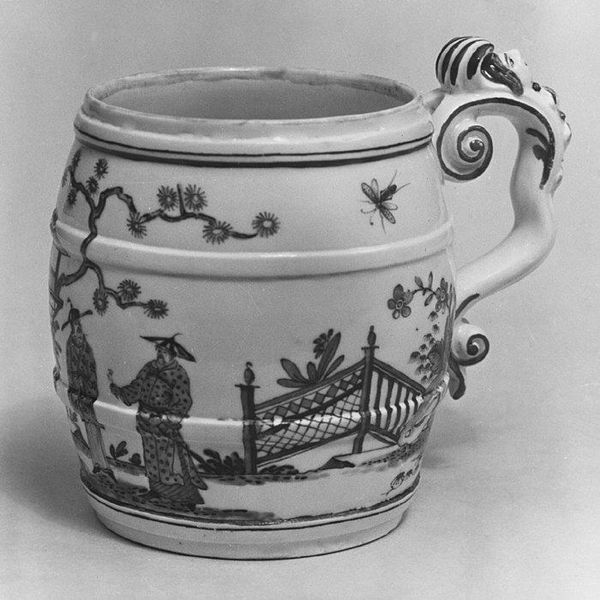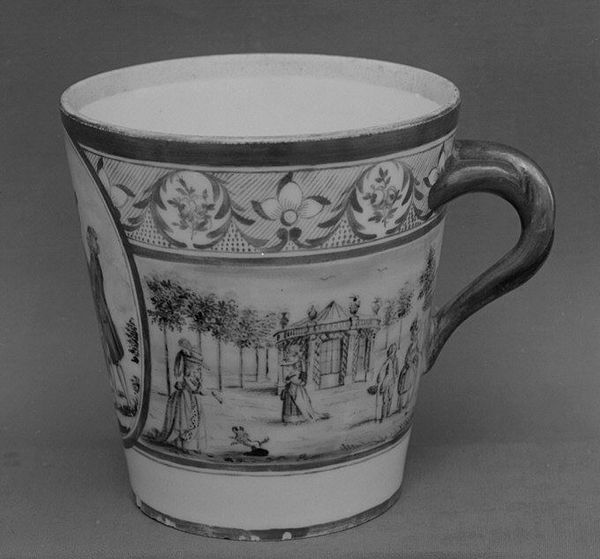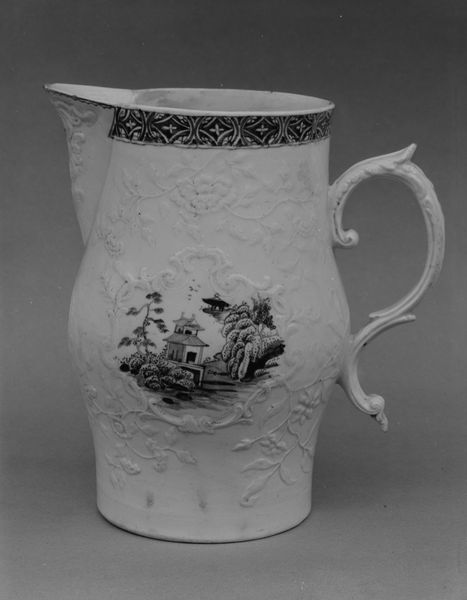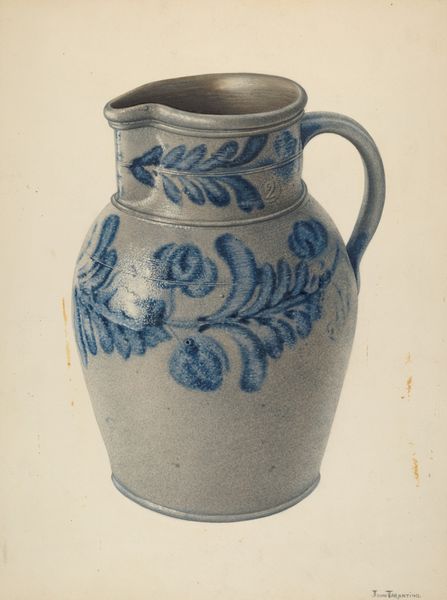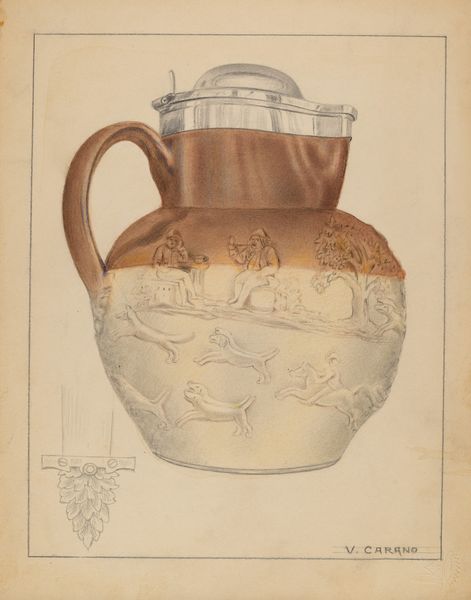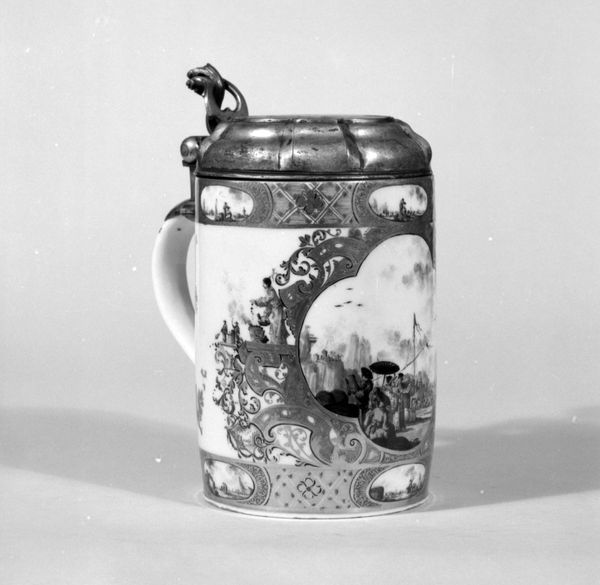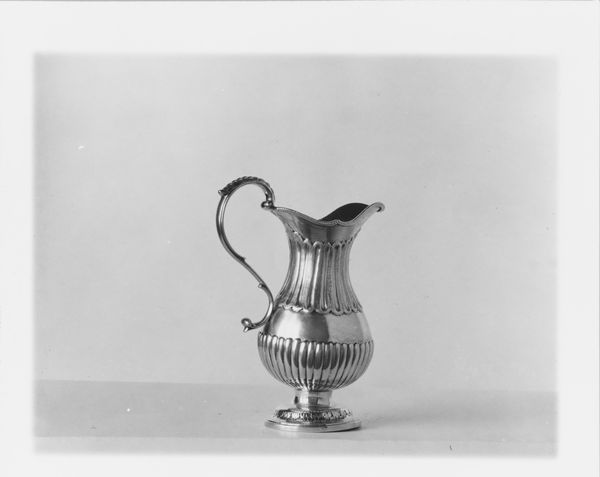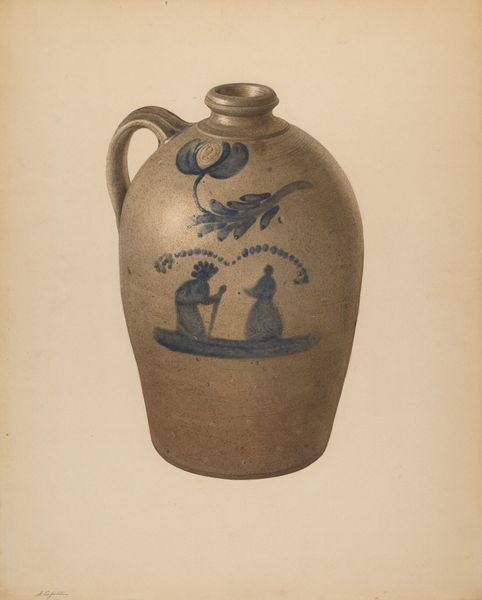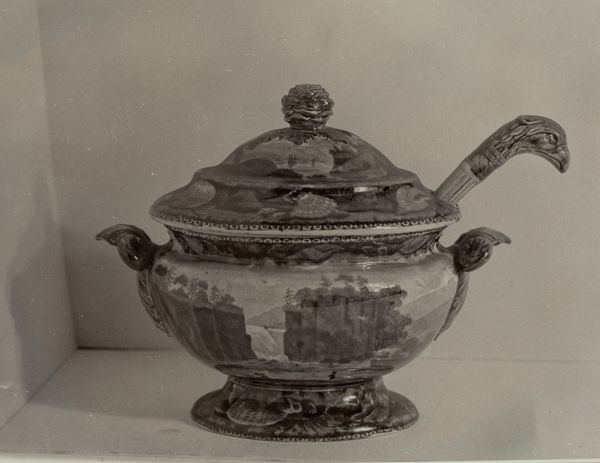
print, ceramic
# print
#
sculpture
#
ceramic
#
stoneware
#
ceramic
#
history-painting
#
decorative-art
Dimensions: overall: 25.2 x 20 cm (9 15/16 x 7 7/8 in.) Original IAD Object: 12 1/4" high
Copyright: National Gallery of Art: CC0 1.0
Curator: Let's turn our attention to this striking object, a ceramic jug dating from around 1936, and thought to be made in Liverpool. Editor: It certainly commands attention. I'm immediately struck by the somewhat naive rendering of very charged political and national symbols. It's like a coded message, attempting elegance but undercut by historical realities. Curator: Precisely! Look closer, and you’ll see it is in the style of a transferware print, allowing detailed designs to be applied to the ceramic surface. Note how this one features notable figures such as George Washington alongside what appears to be an allegorical representation of liberty and an early rendering of the United States. Editor: Right. It seems almost to try to condense a whole historical narrative, the American Revolution, onto a single object. But who was this really for? Liverpool's industrial past was deeply intertwined with both the slave trade and early manufacturing, it must have been marketed towards specific people in Liverpool. Curator: Undoubtedly, that context is key. Liverpool had strong commercial links with America, particularly the Southern states, so while appearing patriotic or celebratory it might have been capitalizing on this very profitable relationship or acting as an advertisement tool. I wonder about the unconscious resonance of those colonial associations embedded within such seemingly benign decoration. Editor: Exactly, it's playing with iconography for political purposes, even now we still do it! This pitcher as a common everyday item would have been there to keep those themes present on an ordinary surface, to create an almost permanent affirmation of shared culture. How complex it seems! It reminds us that cultural memory and shared symbolism are always carefully constructed and layered with ambiguity. Curator: Well said. This piece serves as a reminder to look beyond surface appearances and consider the nuanced dialogues objects engage within historical, cultural, and societal landscapes. It really puts things into perspective. Editor: Absolutely. These historical objects and even decorative pieces often have more complicated stories to tell. Examining this work is a prompt to be conscious of the assumptions we may be unconsciously reinforcing, as well.
Comments
No comments
Be the first to comment and join the conversation on the ultimate creative platform.
